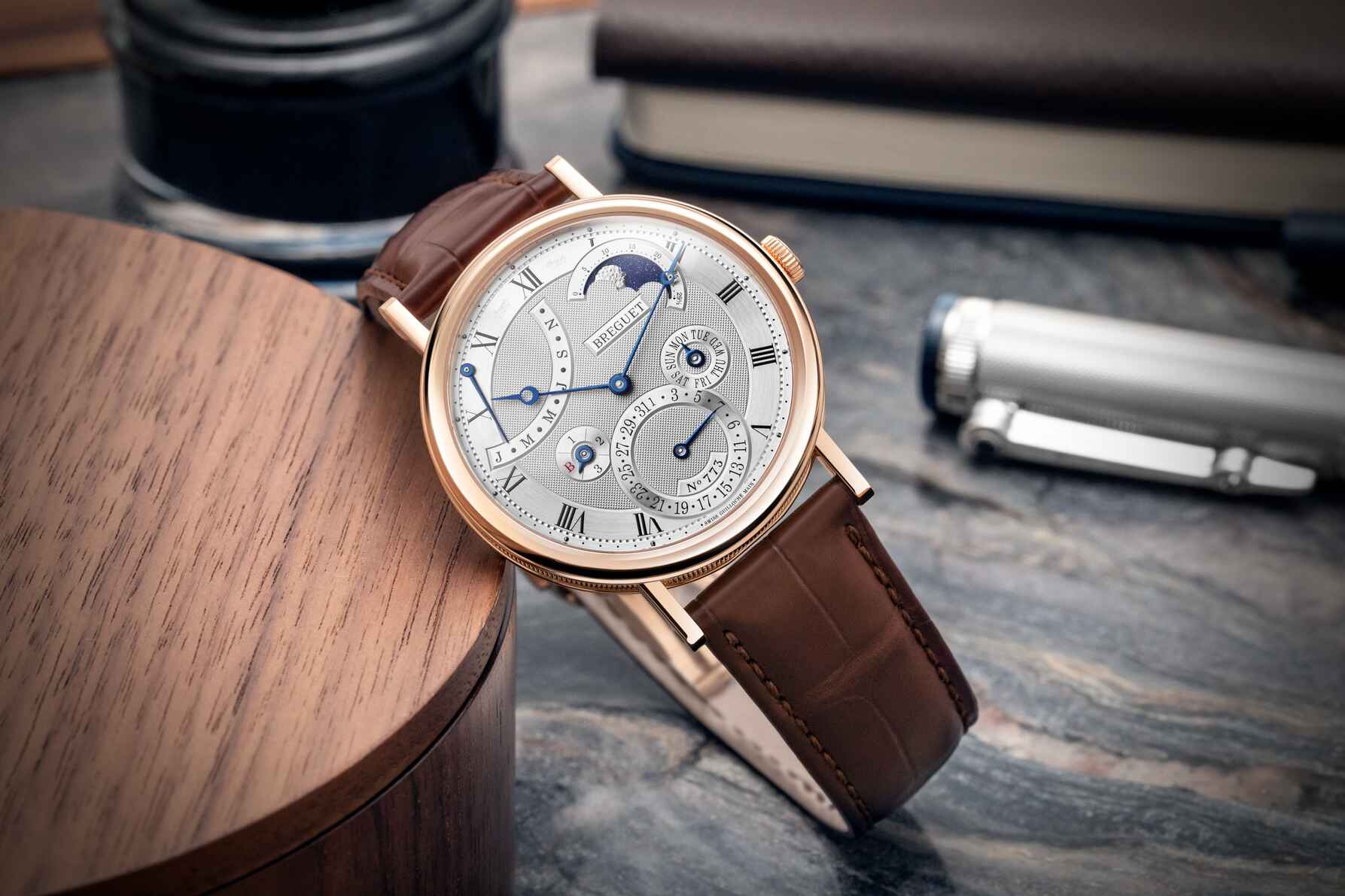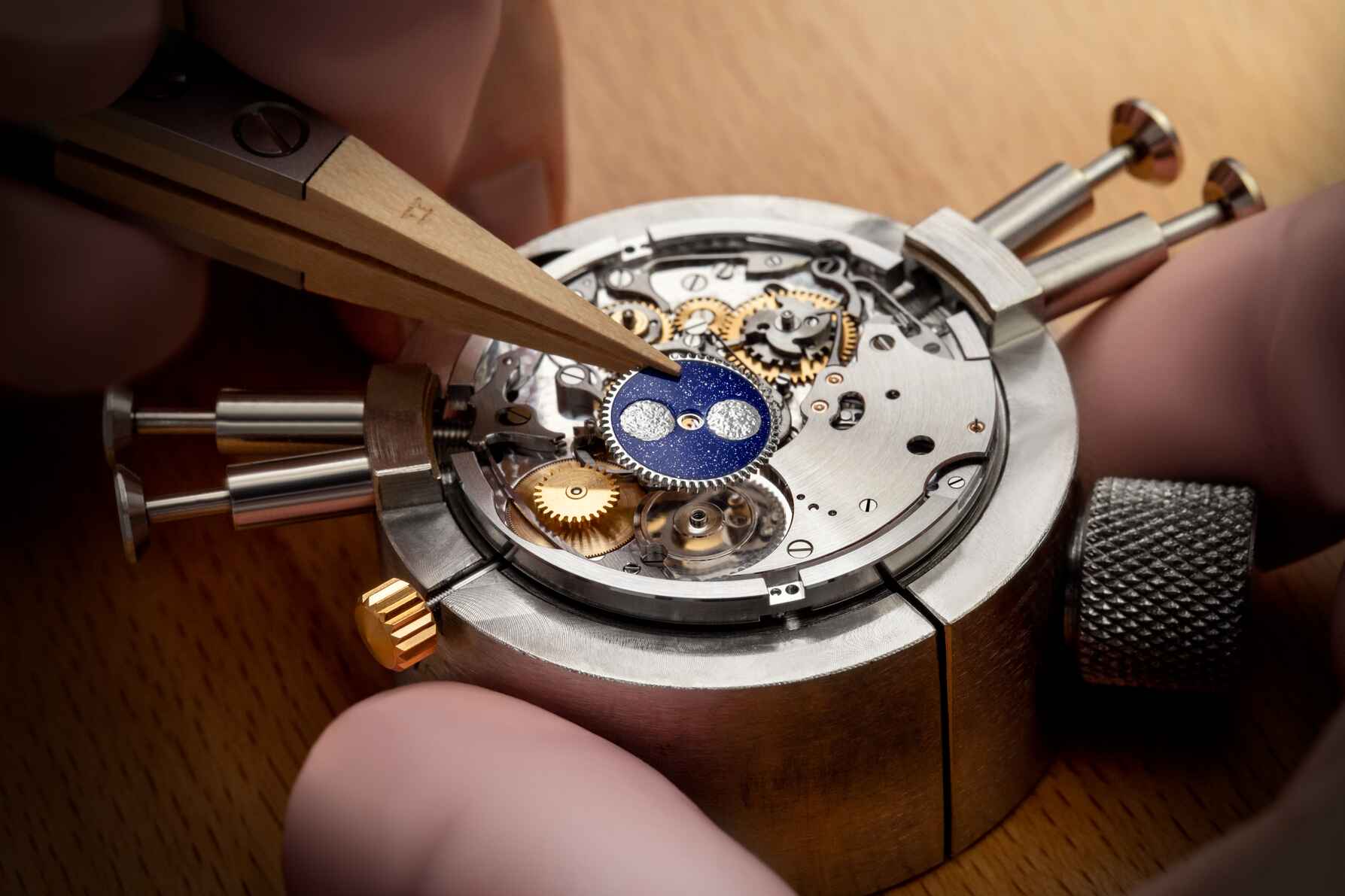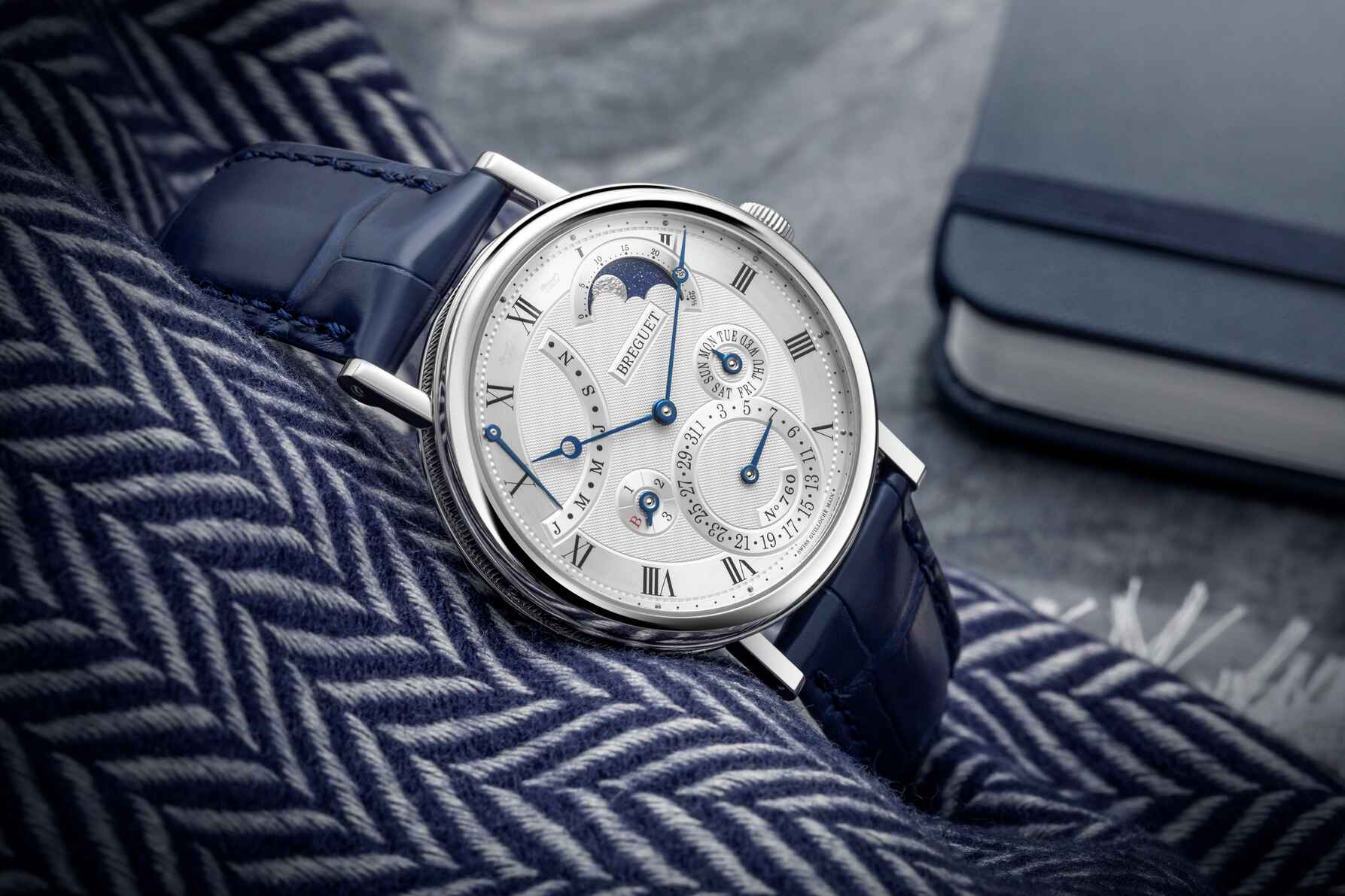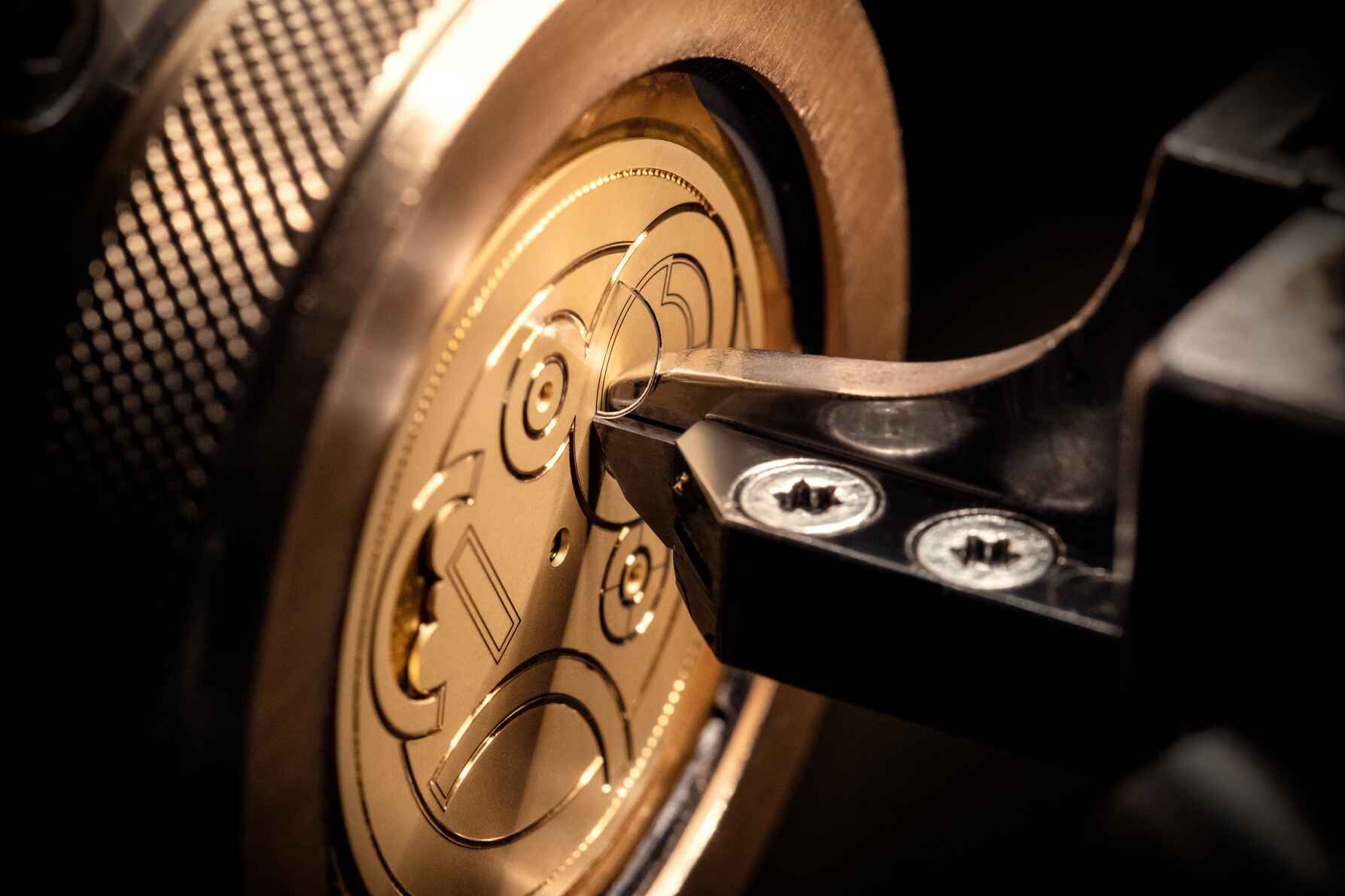Breguet, An Early Master Of Perpetual Calendars, Future-Proofs Its Classique Quantième Perpétuel
If you’re a brand like Breguet, you don’t have to update or completely redesign your watches every couple of years. It’s a brand that is very much about tradition, and it doesn’t have to comply with the latest trends. Its designs are rather timeless and very much on the classic side. However, every once in a while, it’s important to stay relevant and also update the movement inside a watch. So after almost 20 years, it was time to update one of Breguet’s most important watches, the Quantième Perpétuel from the Classique collection.
I’m a fan of Breguet’s Classique line. I own a time-only watch, reference 5907, from that very same collection. I very much appreciate the rather simple but iconic case in combination with the beautiful hand-finished dial. It’s not a watch that wants to show off, but rather, it’s impressive on its own with a sense of understated beauty and calm. Of course, the open-worked watches in the Tradition collection are also very nice to look at. But on my wrist, I prefer to hide that impressive watchmaking under one of the brand’s beautiful hand-guilloché dials. The newly updated Breguet 7327 has a beautiful dial in this style, featuring an updated, more legible layout and historically important complications for the brand.
One of the earliest masters of the perpetual calendar
For many years, horology lovers believed that Abraham-Louis Breguet (1747 Neuchâtel, Switzerland – 1823 Paris, France) invented the perpetual calendar watch in the 1780s. While such a claim would be great for this story, unfortunately, that is not the case. In 2016, Patek Philippe purchased for its museum the world’s earliest-known pocket watch with a perpetual calendar. It was a creation of Thomas Mudge, No. 525, dating back to circa 1762. Nevertheless, Breguet was one of the few contemporary watchmakers to master the perpetual calendar (quantième perpétuel in French). 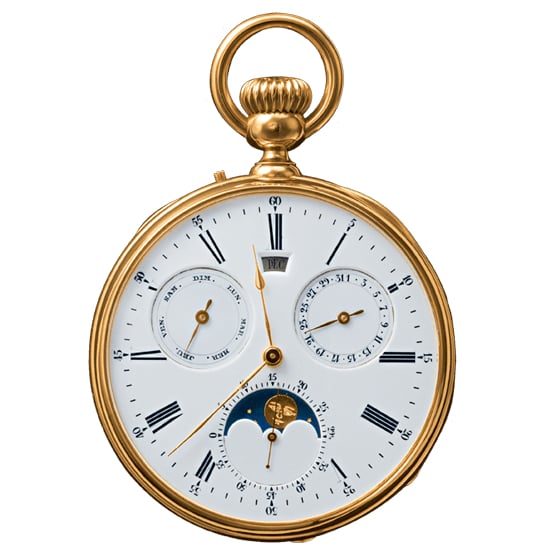
Breguet included a perpetual calendar in his Marie-Antoinette No. 1160 watch, a masterpiece that he started making in 1783 and which took 44 years to complete. In 1795, however, Breguet presented the pocket watch pictured above. It featured a perpetual calendar and a moonphase complication as well. The movement, which, of course, took leap years into account, was incredibly complex, and very few other watchmakers at the time could produce such a thing. And while this was a pocket watch, its dial shared notable similarities with those in Breguet’s wristwatches today. The Roman numerals are a characteristic feature, of course, but it also striking how easy it is to read the time and all the other information on the dial. Breguet constantly strived to make his watches legible, and this differentiated his work from many of the ultra-complex-looking timepieces of the era.
The Breguet Classique Quantième Perpétuel 7327
Fast-forward to today and Breguet has just introduced its new perpetual calendar ref. 7327. The watch seems very much inspired by Abraham-Louis Breguet’s aim for developing easy-to-read dials. But before we get to that beautiful dial, let’s take a look at the case and the movement inside. Just like its predecessor, ref. 5327, the new 7327 also has a 39mm coin-edge case. It also maintains a very slim profile, coming in at 9.13mm thick. That’s only possible because both watches use the same automatic base movement, caliber 502.3 (originally based on the Frédéric Piguet 71). That movement is also inside the time-only Breguet 5157, one of RJ’s favorite models.
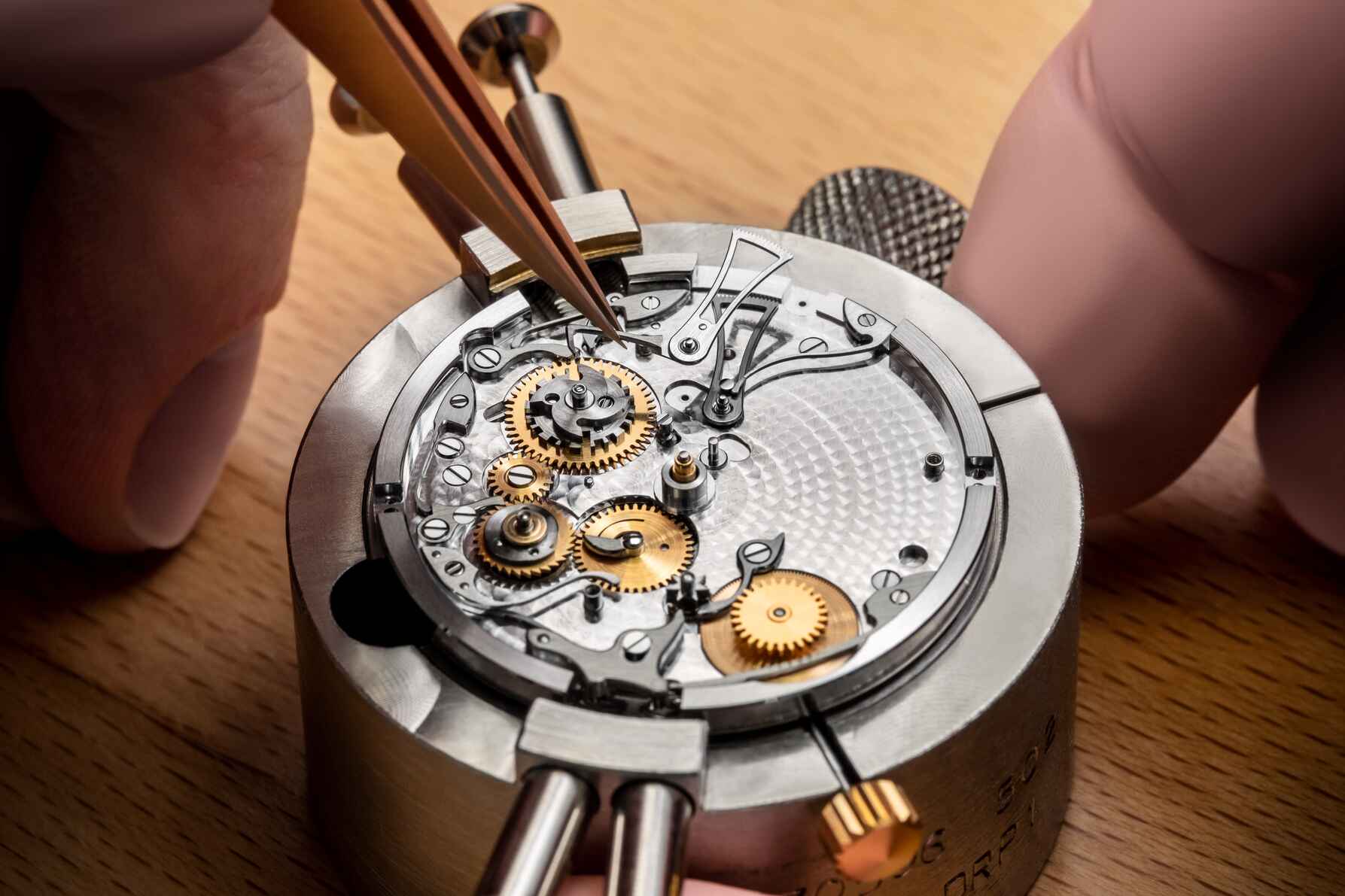
On top of that base movement, the watchmakers have built a new module for the perpetual calendar. As a result, the caliber is now called the 502.3.P, and it uses 294 parts, about 30 less than the outgoing 502.3DRP1. That is probably because Breguet got rid of the power reserve indicator, which isn’t the most useful complication for an automatic watch anyway. That still leaves us with complications for the date, the day, the (retrograde) month, the moonphase, and the leap year. I still can’t believe that all that fits into a movement just 4.5mm thick.
The 502.3P, which has a rhodium-plated finish, runs at 21,600vph and provides 45 hours of power reserve. To increase its resistance to magnetism, it is fitted with a flat silicon balance spring and an inverted straight-line escapement with silicon horns. Through the exhibition case back, you can see the off-center 18K gold rotor, which is such a characteristic feature of this movement series.
More moderate movement finishing and a cleaner dial layout
What immediately caught my eye was the difference in finishing on the movement. The model from 2004 had rather eclectic decorations with flowers all over the movement. The bridges were freehand engraved, just like the hand-skeletonized rotor. When I look at it now, it’s beautifully done of course, but it seems like a bit much. And the people at Breguet may have agreed because the finishing on the new 7327 is a lot more moderate. The Côtes de Genève finishing on the bridges and the circular barleycorn pattern on the rotor are still beautiful, but they are definitely more subdued.
I do like the more pragmatic approach that Breguet took, though, and the same is true for new the silvered gold dial. Breguet moved the old central sub-dial for the month to where the power reserve indicator used to be at ten-thirty. The designers also halved the moonphase display and inverted it, which makes the dial feel much less cluttered as well. And the fact that the entire inner dial now only contains Clous de Paris rather than various patterns also makes it a lot easier on the eyes. Just look at the two side by side. Don’t you agree that the new model looks a lot more organized than the former one?
Final words
I think Breguet did a great job in cleaning up the Quantième Perpétuel. It’s still a very impressive timepiece thanks to the level of finishing throughout and the complex, slim movement. But it doesn’t brag about it, and that’s exactly what I like so much about the brand.
The rose gold version of the new Breguet 7327 comes on a brown alligator strap, and the white gold version comes with a blue alligator strap. Both straps feature a folding buckle in the corresponding metal, and both watches will be available for €86,000. If you’d like to know more, please check out the official Breguet website.
Let me know in the comments what you think of Breguet’s new perpetual calendar.
You can also find and follow me on Instagram: @fliptheparrot

